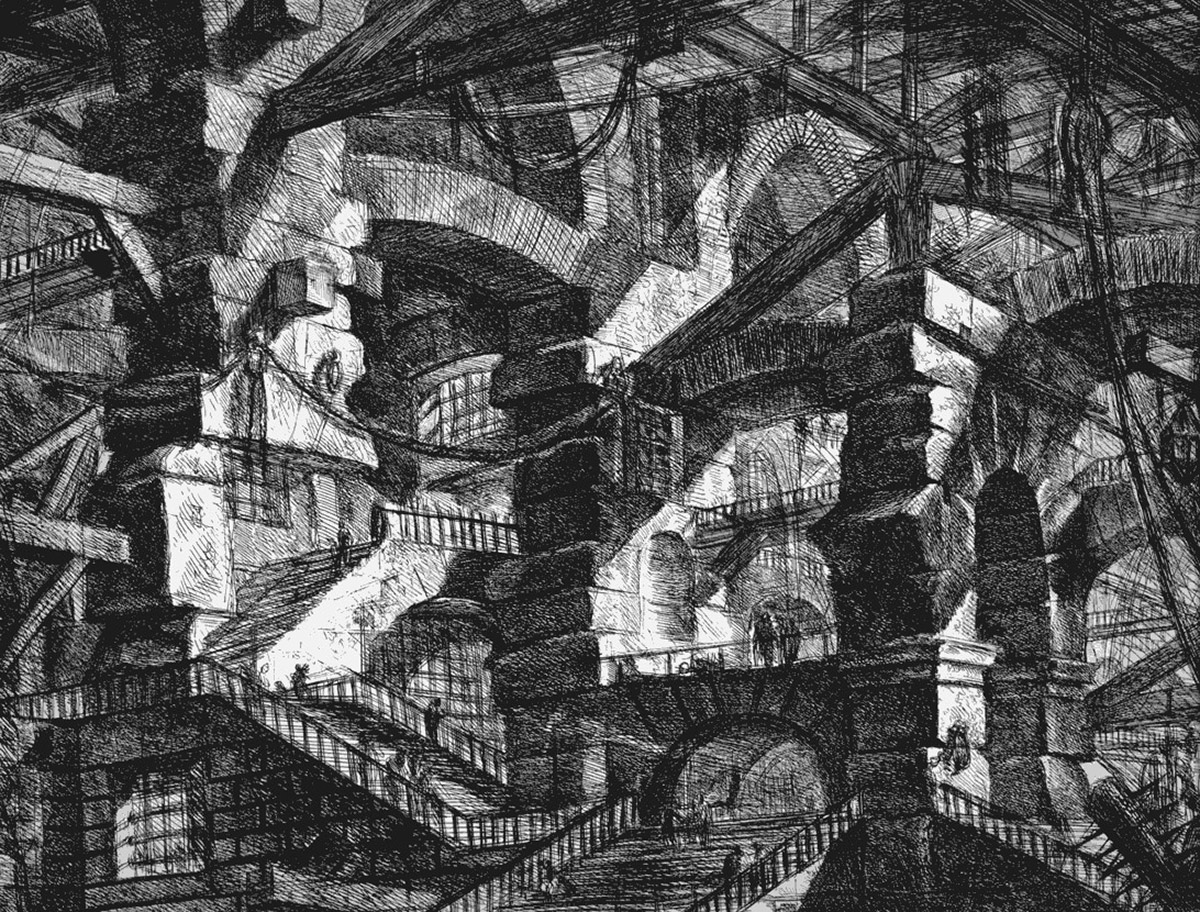
Numbers I to IX were all done in portrait format (vertical), while X to XVI were landscape format (horizontal). They are capricci, whimsical aggregates of monumental architecture and ruin. While the Vedutisti (or "view makers"), such as Canaletto and Bellotto, more often reveled in the beauty of the sunlit place, in Piranesi this vision takes on what from a modern perspective could be called a Kafkaesque distortion, seemingly erecting fantastic labyrinthine structures, epic in volume. The images influenced Romanticism and Surrealism.
#Piranesi prisons series
Number XI in the series is also very similar, in reverse, to a Piranesi drawing Study for a palatial interior in the British Museum. Surviving drawings for complicated sets by Filippo Juvarra and Ferdinando Bibiena (both primarily architects) as well as others have evident similaries to the prints in their receding spaces and disappearing staircases.

For the second edition in 1761, all the etchings were reworked and numbered I–XVI (1–16), with numbers II and V new etchings in the series.ĭespite being intensely personal imaginative creations, for Piranesi "a source of self-analysis and of creative release", aspects of the Carceri draw on Piranesi's early training as a set designer for the stage prison scenes were often called for. Piranesi reworked the prints a decade later, giving them second states. The first state prints were published in 1750 and consisted of 14 etchings, untitled and unnumbered, with a sketch-like look. The series was started in 1745, when Piranesi was already well-known for more conventional prints of the ancient and modern buildings of Rome. All depict enormous subterranean vaults with stairs and mighty machines, in rather extreme versions of the capriccio, a favourite Italian genre of architectural fantasies the first title page uses the term. 1745 to 1750, when the first edition of the set was published.

Series of prints by Giovanni Battista Piranesi Title page, second edition, 1761Ĭarceri d'invenzione, often translated as Imaginary Prisons, is a series of 16 etchings by the Italian artist Giovanni Battista Piranesi, 14 produced from c.


 0 kommentar(er)
0 kommentar(er)
